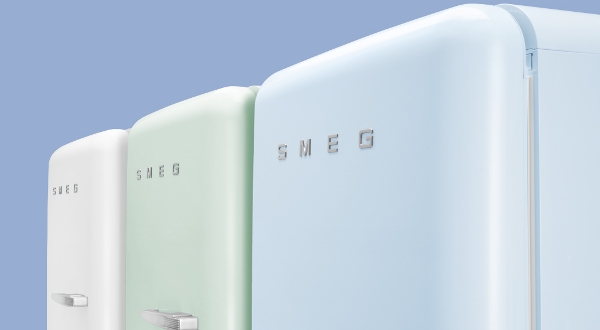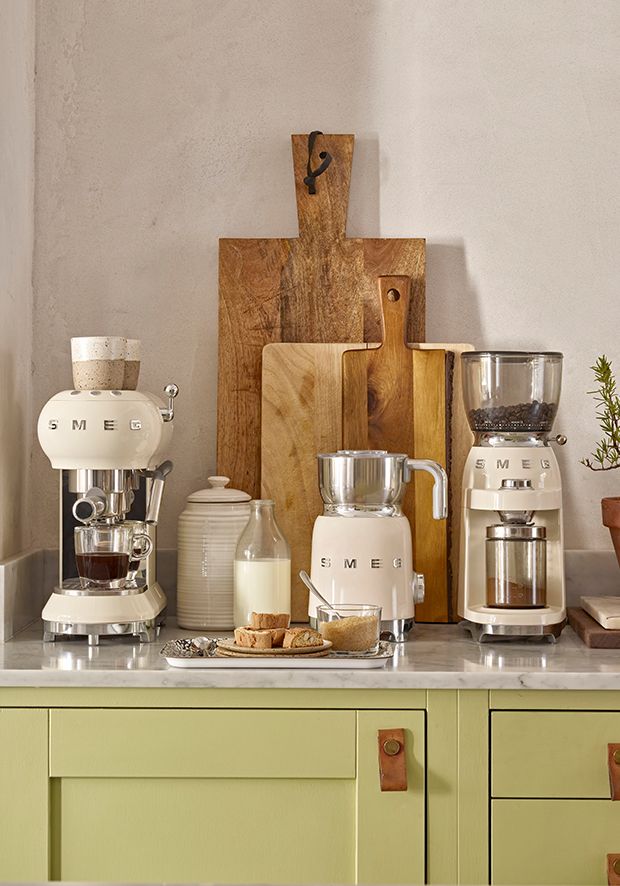
Visit the official Smeg website for your Country
We have found a Smeg subsidiary or authorized distributor website for your region. Do you want to update your location?
Continue here- Products
- Major appliances
- Ovens
- Freestanding Cookers
- Microwave ovens
- Cooktops
- Rangehoods
- Wine cellars
- Refrigerators
- Blast chillers
- Coffee machines
- Dishwashers
- Built-in drawers
- Accessories
- Small appliances
- Toasters
- Kettles
- Citrus juicers
- Milk frothers
- Stand mixers
- Hand Mixers
- Blenders
- Hand blenders
- Espresso Coffee machines
- Drip coffee machines
- Coffee grinders
- Accessories
- Special products
- Aesthetic lines
- Inspiration
- Company
- Shop Online
- Support
- Smeg Commercial
- Brochures & Documents
- Current Promotions
- Find us
- News
- Showrooms
- Book a product demonstration
- Smeg Cucina recipes
- Leave a review
- Technician Login
Since induction hobs don't light up, how can I tell if the surface is still hot after I've taken the pan off?
Induction hobs will show a flashing "H" (for "Hot") on the display, which means that the cooking zone is still above 60°C.When the temperature drops below this level, the display will automatically switch off.
Are induction hobs programmable?
You can set your induction hob to cook for a period ranging from 1 to 99 minutes via the programmable timer. When the time runs out, the cooking zone switches off automatically. See your instruction manual for details.
What's the difference between ceramic cooktops and induction cooktops?
Ceramic cooktops work thanks to heating elements underneath the glass surface which heat the selected cooking zone. Induction cooktops, on the other hand, do not use heating elements. They operate on a principle of electro-magnetic energy. Circular coils generate a electro-magnetic field when they come into contact with material containing ferrous content (iron). So when your pan, with ferrous material in the base, is placed on the induction zone, the pan itself heats up (rather than the element or the glass of the induction cooktop). These cooktops are more efficient and extra safe. Both types of cooktop are known for being extremely easy to clean.
What does the ECO-logic function do?
The Smeg ECO-logic function, a feature of both ceramic and induction cooktops, involves an electronic device which limits the appliance's power consumption to less than the 3 kW maximum applicable to the majority of European households.
What's the best way to clean my ceramic or induction cooktop?
Cooktops must be regularly cleaned, ideally after every use. Make sure the residual heat indicators are no longer lit up before cleaning. If burned-on food residue has been left on the cooktop after cooking, scrape this off using a scraper, rinse and then dry with a microfibre cloth. Regular cleaning will reduce the need to use chemical products when cleaning your cooktop. For more information on how to keep your cooktop in tip-top condition, please consult the user manual supplied with your Smeg product.
How do I clean my Smeg stainless steel cooktop?
We recommend using hot, soapy water, to clean and dry with a microfibre cloth. To avoid scratching and leaving permanent marks on brushed steel, always clean with the finish grain and never against it.
Why does my automatic ignition not work anymore?
Your burners may not ignite if the caps are dirty or the small holes where the gas comes out are blocked with grease or other substances. In this case, remove the caps and clean them along with the burner holes, and allow them to dry thoroughly.
What's so special about Smeg gas burners?
Smeg is a leader in gas burner technology developing innovative burners such as the ultra-rapid double control dual flame burner, whose two parts can be used independently depending on your cooking requirements (inner ring for slower cooking, outer ring for quicker cooking) or they can work in conjunction for dishes like stir-fries that require quick and intensive cooking. The very latest Smeg cooktops feature the newest development in burner tecnology - in the shape of "vertical" flame high performance burners, exclusively designed and manufactured by Smeg. The directional "vertical" flame concentrates the available energy and so increases the efficiency and concentration of heat transferred to the pot.
What is FFD?
FFD, or flame failure device is the safety valve which prevents accidental gas leaks. Using a special thermocouple, the gas supply will be cut off if the flame is accidentally extinguished, i.e. as a result of liquid splashing on the flame, or strong draught etc.
How do induction cooktops work?
Induction cooking is based on an electro-magnetic field creating energy which heats the base of a pan positioned on the cooktop. The electro-magnetic field is activated when material containing iron (ferrous material) comes within range of the inductors beneath the cooktop surface. That's why pans need to contain ferrous material for induction to work. Full stainless steel, aluminium, copper, terracotta or pyrex don't contain ferrous material, so theoretically they won't work. However most pan manufacturers are now producing pans which are suitable for use on induction cooktops, even if they are made from some of the materials mentioned above. This is because they are incoporating some ferrous material in the base of the pan. Look out for the induction symbol when buying new cookware.
How can I tell if I can use my current pans on induction?
Induction hobs only work with pots and pans that contain ferrous metal in the base. To check if your pans will work, hold a magnet next to the pan base; if it attracts, the pan will work on induction. Another way of checking is to pour a small amount of water into the pan and then place it on the cooking zone. If the display starts flashing, the pan is not compatible. Full stainless steel, aluminium, copper, terracotta or pyrex don't contain ferrous material, so theoretically they won't work. However most pan manufacturers are now producing pans which are suitable for use on induction cooktops, even if they are made from some of the materials mentioned above. This is because they are incoporating some ferrous material in the base of the pan. Look out for the induction symbol when buying new cookware.
What are the benefits of induction cooking?
The main advantage of induction cooking is its fast responsiveness and cooking speed. Induction cooking is generally about twice as fast as traditional gas cooking and Smeg induction cooktops also feature a boost option, which is superfast and searingly hot. For example, induction is super-effective at bringing water to the boil quickly, for fast cooking like stir frying and for taking your pan back to high temperatures quickly after cold ingredients have been added. One the other end of the spectrum, induction is also very slow and gentle. For example, on setting 1, you can melt chocolate without a bain marie, in fact the chocolate can sit, gently melted, all day without burning. Induction is fantastic for emulsions such as bernaise sauce. The other key benefit of induction is that it is easy to clean. Not only because of the wipe-clean beautiful flat glass surface, but also because there are no elements heating the glass, so any spill-overs are less likely to burn onto the surface. For the same reason, that the cooktop surface is not heated directly, induction is much safer to use. Smeg induction cooktops also feature digital touch controls for the various customisable cooking zones. Finally, Smeg induction hobs feature an ECO-logic mode which limits their power consumption to 2.8 kW.
Why don't induction zones light up when they are on?
Induction cooking zones do not light up like ceramic cooking zones. Induction cooktops work according to a principle of direct contact with pans, so it's actually the pan which heats up, rather than the cooking zone beneath. The actual base of the pan is where the heat is generated to cook the food.
SMEG Australia Pty Ltd
1/4D Huntley St, Alexandria, NSW 2015 Australia
Phone +61 02 8667 4888 - Email [email protected]

 50' style
50' style
 Made In Italy
Made In Italy
 Cooking with Smeg
Cooking with Smeg
